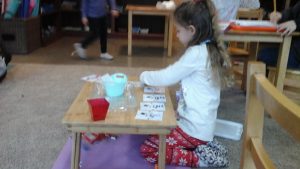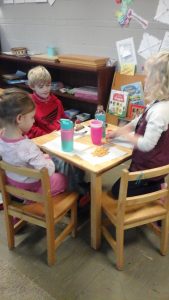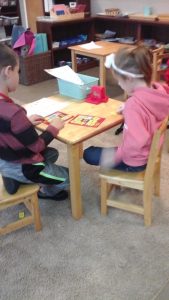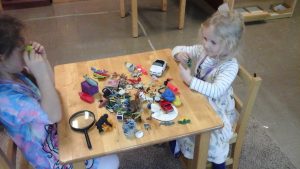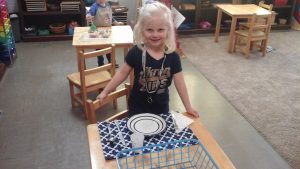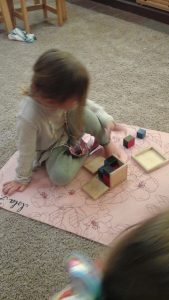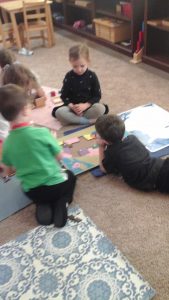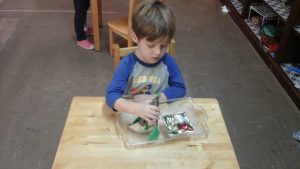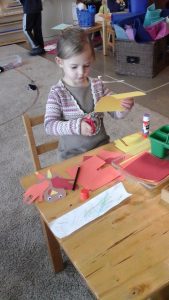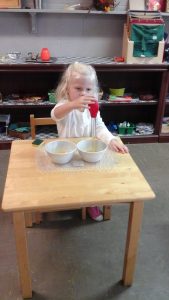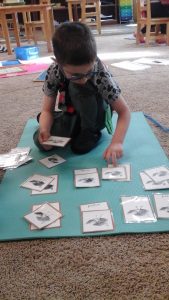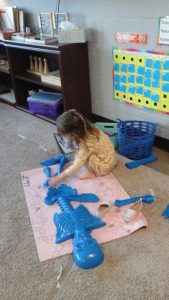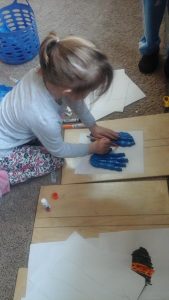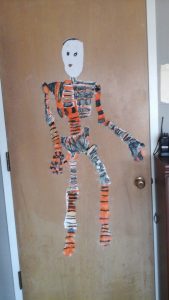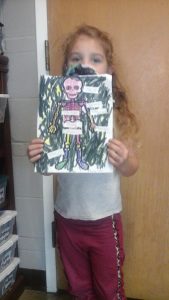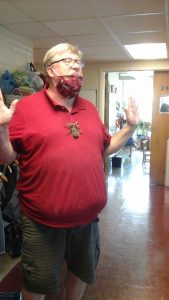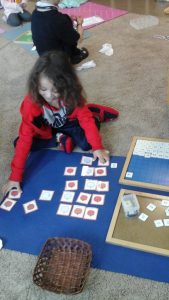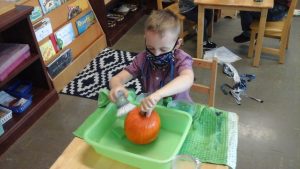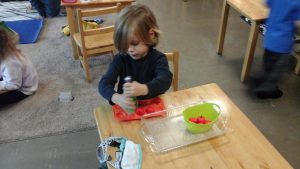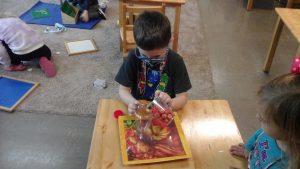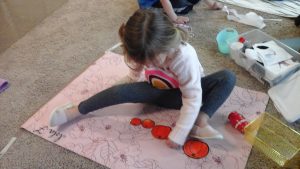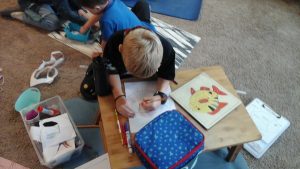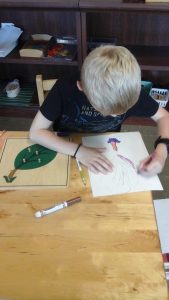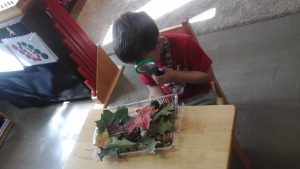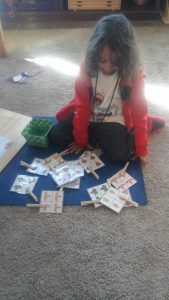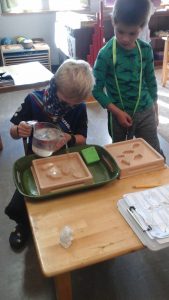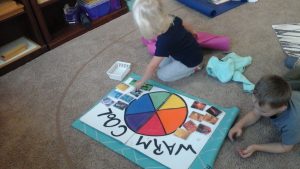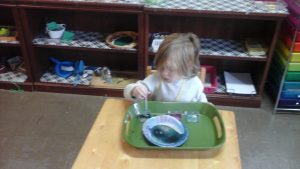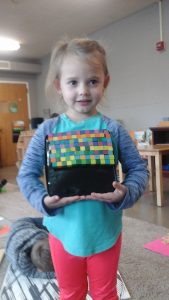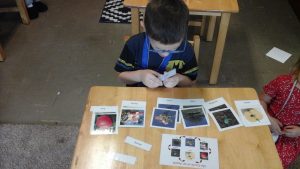Welcome back Aspen Room families! This week the Aspen Room has been “Snow” Cool! The Aspen Room has been discussing Snow and all things related to cold winter days. We learned why it snows, what snow is made of, how snow forms, and the amazing designs ice crystals make to form snowflakes. We watched a video, How Snowflakes Form, and a video showing magnified examples of different types of snowflakes and their crystal designs. Did you know….that different types of snowflakes (crystal combinations) form depending on the temperature of our atmospheric conditions. Therefore, the type of crystals that form are dependent on temperature and the path a snowflake takes as it falls. This is what makes each snowflake unique!
After discussing snowflakes, we shared what we like to do outdoors during the winter months. After sharing all of our thoughts, stories, and ideas on all the fun we have with snow, we explored our winter themed practical life shelf and enrichment activities! Ask your child about the foam bead snowball spooning activity!
The Kindergarten students explored subtraction with the decimal system and learned the terms Minuend , Subtrahend, and Difference. Next week we will continue to explore this mathematic operation with Dynamic Subtraction!
For the week of January 11, we will explore the Antarctic and the Arctic! The Aspen Group will look at these Biomes and will explore their similarities and their differences, and what kind of wildlife can be found in these habitats.
